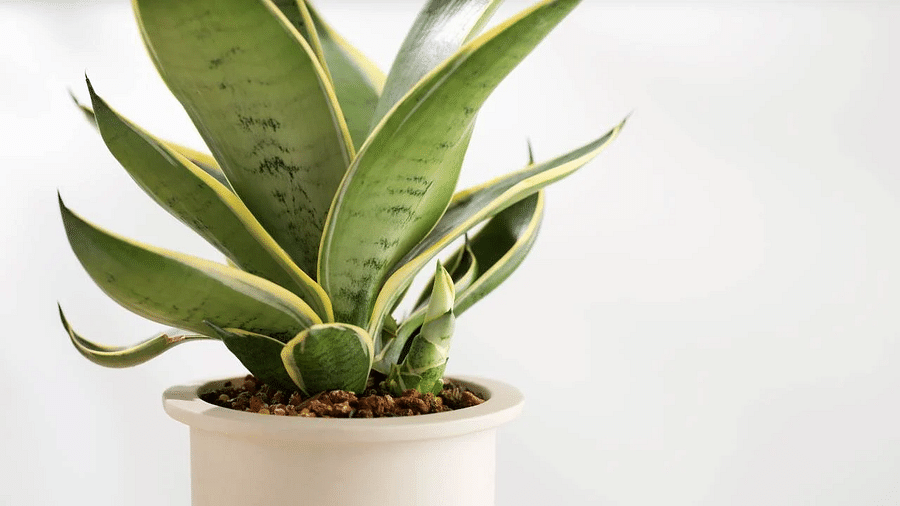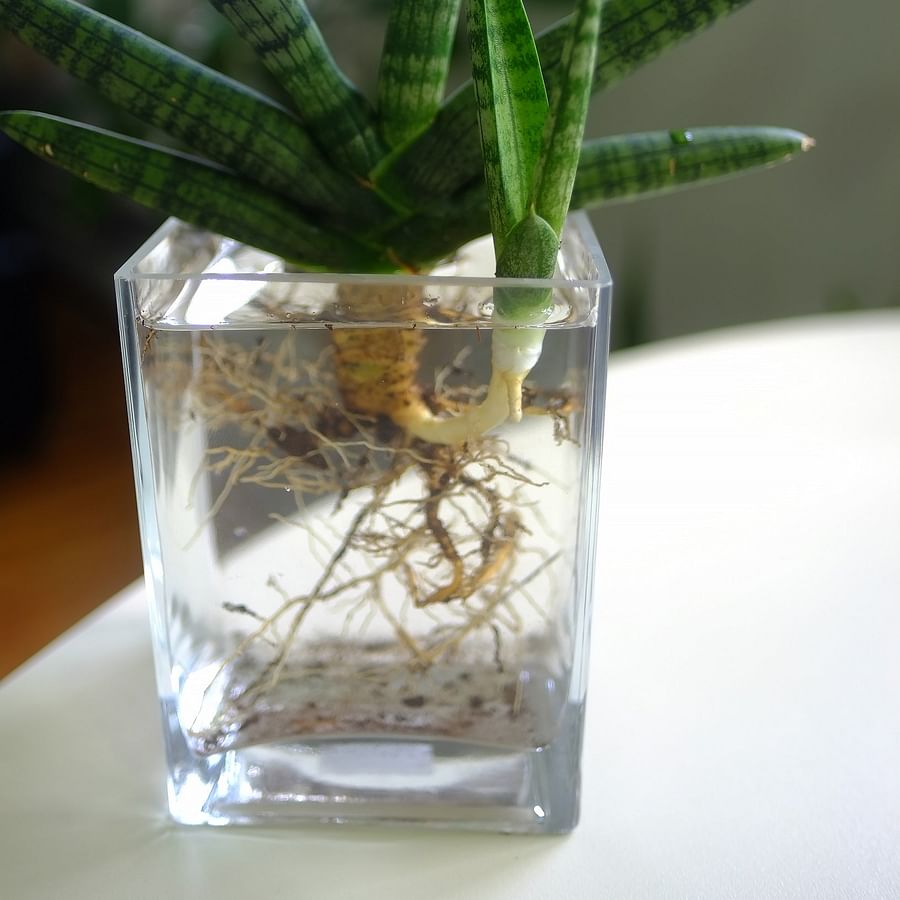Stunted Snake Plant Growth: Common Causes and Solutions

Ah, the Snake Plant, a stalwart sentinel of the indoor foliage world, with its upright, sword-like leaves and understated elegance.
It's a plant that's a pretty face and a silent warrior, purifying the air around it. But what happens when this hardy hero starts to falter, its growth stunted and vigor diminished?
Is it the common challenges of indoor plant care or something more specific to the Snake Plant?
Picture your Snake Plant, once a towering testament to your green thumb, now a shadow of its former self.
It's not the end of the line for your leafy friend, but a call to action. Many factors could be behind your Snake Plant's stunted growth, from snake pests to nutrient deficiencies.
It's time to wear your detective hat, roll up your sleeves, and dive into the intriguing world of plant problem-solving.
Ready to unravel the mystery of your Snake Plant's stunted growth? Let's get started!

Snake plants, or Sansevieria, are beloved for their hardiness, but even these tough cookies can fall prey to improper watering. Whether it's a deluge or a drought, your snake plant can react adversely, leading to stunted growth.
Overwatering can cause root rot, a common snake plant problem, which hampers nutrient absorption, stunting growth. On the other hand, underwatering can lead to shriveled leaves and slow growth. So, what's the sweet spot?
Imagine being a rainforest plant where the showers are heavy but infrequent. That's your snake plant! It prefers a good soak followed by a period of drought.
This watering technique, coupled with well-draining soil, can help in improving snake plant health and fixing snake plant growth issues.
Remember, when it comes to watering, it's all about balance. Too much or too little, and your snake plant might throw a tantrum!

The Snake Plant, also known as Sansevieria, is a resilient succulent growing in various light conditions. However, just like Goldilocks, it doesn't want its light too hard or too soft - it needs it just right.
What does "just right" look like for a Snake Plant?
Snake Plants prefer indirect light, but they can tolerate some direct sunlight. Too much direct sunlight can cause the leaves to yellow and stunted growth. On the other hand, if your Snake Plant is tucked away in a dark corner, it might also suffer from stunted growth due to insufficient light.
Remember, light is a crucial part of photosynthesis, the process plants use to make food. So, if your Snake Plant isn't growing as it should, ask yourself: is it basking in the right amount of light?
For more snake plant care tips, check out our comprehensive guide.

Just as humans need a balanced diet to thrive, your Snake Plant craves a cocktail of nutrients to flaunt its lush, sword-like leaves. However, when this nutrient party runs dry, your plant might start throwing tantrums in the form of stunted growth.
How can you tell if your Snake Plant is nutrient-starved?
Well, yellowing leaves might be your first clue. A Snake Plant deprived of nitrogen often develops yellow leaves, while a lack of phosphorus might result in a plant that's a little too 'short for its age.
' Not enough potassium?
You might notice weak stems and slow growth. And if the edges of the leaves begin to curl, your plant might be crying out for more calcium.
Does this sound like your Snake Plant?
If so, it's time to roll up your sleeves and dive into the world of plant nutrients. Remember, a well-fed Snake Plant is a happy Snake Plant!
Now that we've covered the common causes of stunted snake plant growth let's delve into how to diagnose these issues.
Here's a step-by-step guide to help you identify the signs and symptoms of stunted growth in your snake plant.
Learn more about 🌱 Diagnosing Stunted Snake Plant Growth: A Step-by-Step Guide 🐍 or discover other Problem Plant guides.
By following these steps, you can identify the issues affecting your snake plant's growth. Check out the following video for a visual guide on diagnosing these problems.
Now that we've discussed how to diagnose issues in your Snake Plant let's look at a practical demonstration.
The following video, 'Sheffield Made Plants, ' discusses the 10 most common Snake Plant problems you might be experiencing.
Now that we've looked at how to diagnose issues in the Snake Plant, let's move on to the solutions for stunted Snake Plant growth.
Like the rhythm of a captivating dance, the watering schedule for your Snake Plant should be consistent yet flexible.
So, are you ready to sway to the rhythm of your Snake Plant's hydration needs?

So, you've got your watering routine down to a tee, but your snake plant still seems to be sulking.
Could it be yearning for more light? Like any good sunbather, Snake plants love basking in bright, indirect sunlight.
But they're also quite the night owl, able to endure lower light levels. If your snake plant is languishing in the shadows, consider relocating it to a well-lit spot, away from direct sunlight, to prevent scorching.
Conversely, a little shade might be just the ticket if it's wincing in the harsh midday sun. Remember, balance is key. Like other indoor plants, too much or too little light can lead to snake plant growth issues.
So, watch your green companion and adjust its light diet as needed. After all, diagnosing and fixing snake plant growth issues can be as simple as flicking a switch!

Just like us, plants thrive when they receive the right nutrients. This is particularly true for the Snake Plant, or Sansevieria, which can suffer from stunted growth when not properly nourished.
How do we ensure our green friends are getting what they need? The answer lies in the right fertilizer.
Not all fertilizers are created equal, and the Snake Plant has its preferences. It thrives on a well-balanced fertilizer with equal nitrogen, phosphorus, and potassium. Applying this every 6-8 weeks during the growing season can make a difference.
What if you've been fertilizing, but your Snake Plant still isn't growing?
It may be suffering from a specific nutrient deficiency. Here's a helpful guide to diagnosing common plant problems, including nutrient deficiencies.
Remember, a healthy plant is a happy plant!
Test your understanding of the common causes and solutions for stunted Snake Plant growth.
Learn more about 🌱 Stunted Snake Plant Growth: Causes and Solutions Quiz 🌱 or discover other Problem Plant quizzes.
And there you have it, plant lovers - the ABCs of snake plant problems and their remedies. You now hold the key to transforming your stunted Sansevieria into a thriving piece of green art.
But remember, this is just the beginning. Like our favorite hobbies or most cherished relationships, great plant care demands time, patience, and consistent effort.
What's next on your plant care journey?

Will you be applying these snake plant care tips to boost your greens' health or perhaps diving into the mysteries of pepper plants' growth issues? Or maybe you're curious about diagnosing why a plant is dying.
Whatever path you choose, remember that each struggle you face, each snake plant pest you conquer, only enhances the joy of witnessing your plants flourish.
Now, go forth and turn those plant problems into plant triumphs!
Post a comment